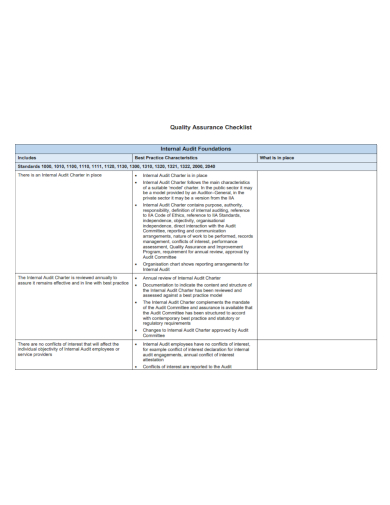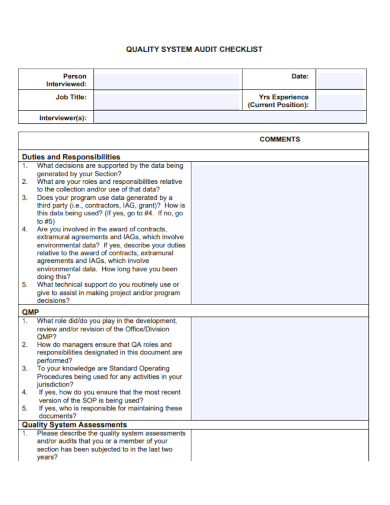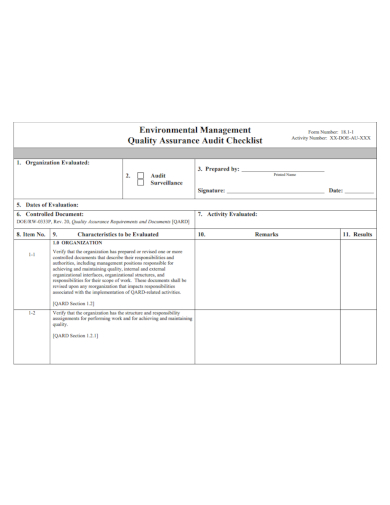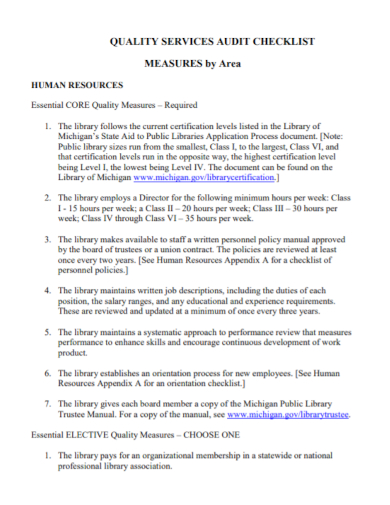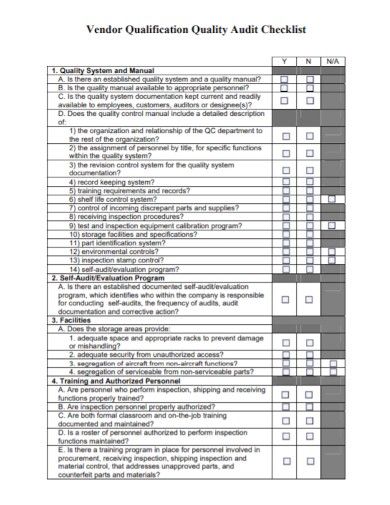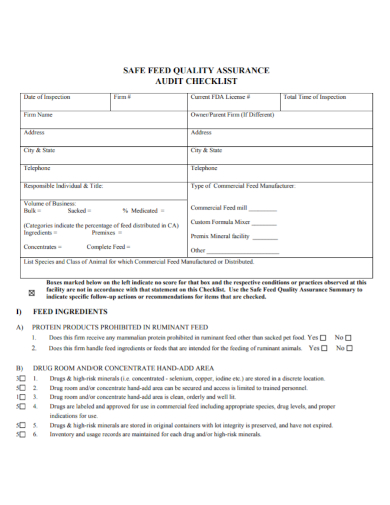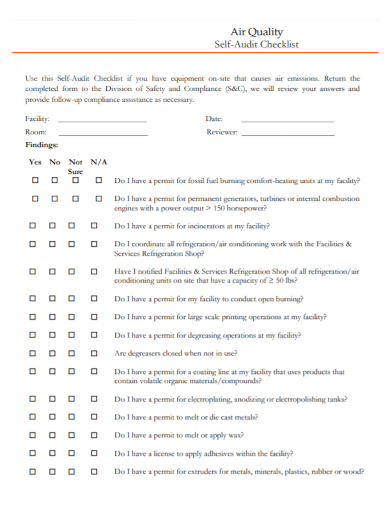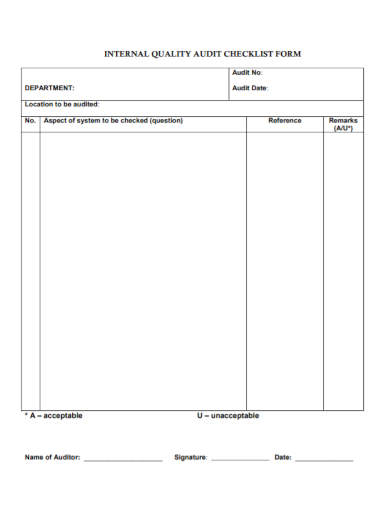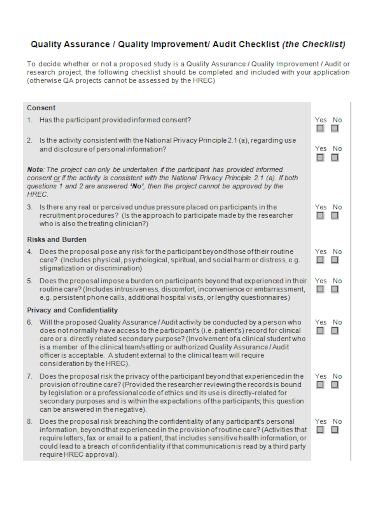Suppose your company has found a new manufacturer for your business that produces and could provide you with a wide variety of products. With a professional presentation and clear medium for communication, you easily have high hopes for this new potential business partner. But as a businessman, experienced or not, you should know not to rush a massive order from this new supplier equipped only with high hopes for assurance. Proper due diligence requires a proper supplier evaluation that uses an effective quality audit checklist to make sure that whatever your expectations may be, it is align with reality. It is best for you to be sure that whatever your new supplier is marketing, is exactly what you’re getting.
A good quality audit checklist easily helps you avoid disaster. Suppliers don’t usually have large labs or facilities to verify material composition, nor are there any records showing factory coordinates and other specifications that mentions a partner lab for the sake of testing. You know this because these are part of the requirements for the audit framework and the subsequent reports. It’s just better that you yourself are confident and satisfied with the products and services that you may receive rather than have your judgement based on testimonials alone. Regardless of how confident you are with your supplier, there’s no substitute to having a well written quality report to have on hand, to verify your supplier’s capabilities and avoid potential problems in the future. Make sure that you yourself are familiar with the document and how it works by checking out these quality audit checklist samples that we have listed down below. Once you’re gotten yourself acquainted with what it is and how it works, feel free to use these templates as guides and even as templates for your own audit checklist.
8+ Quality Audit Checklist Samples
1. Quality Assurance Audit Checklist
2. Quality System Audit Checklist
3. Environmental Management Quality Audit Checklist
4. Quality Services Audit Checklist
5. Vendor Quality Audit Checklist
6. Safe Feed Quality Audit Checklist
7. Air Quality Self Audit Checklist
8. Internal Quality Audit Checklist Form
9. Quality Improvement Audit Checklist
What Is a Quality Audit Checklist?
A quality audit checklist is an invaluable tool used to compare a business practice and processes or a supplier’s products and services to the requirements and criteria set by the company itself or more commonly by ISO standards. A quality audit checklist contains everything needed to complete an audit or inspection accurately and efficiently. It’s essentially a systematic examination of an aspect of a business or supplier to assess conformance with a set standard. The inspection is usually conducted by an appointed individual or a group of internal and external auditors. Passing a quality audit provides you with the assurance that whatever you are getting from a supplier or organization are at par with the expectations set or with a standard set by the industry. The document is a vital tool for any business because it provides the management the opportunity to improve the services and products that they offer, resulting in better production and results overall.
What Should Be Included in a Quality Audit Checklist
You or your company may have your own criteria set that you use to verify during an inspection or audit. Regardless of the document’s shape and form, quality audit checklists should include at least these essential components.
- Zero Tolerance For Severe Violations
You might allow for some small deviations from expectations in some of your checklists’ checkpoints. But you should remember that you should not be lenient with these violations, especially the more serious ones. Verify mandatory licenses and certificates. mac - Basic Facilities, Environment, and Maintenance
It would also be best to tour the full facility that you will be partnering with beforehand since it is a significantly basic and vital part of the overall quality audit process. Auditors should record their findings in a relevant section of the checklist to cover the general production facilities. - Quality Management System Organization
A well written quality audit checklist should include a section that is dedicated to the supplier’s quality management system. This component is central to understanding if your supplier meets your company’s quality standards. - Incoming Quality Controls For Various Materials and Components
You wouldn’t want your supplier to cut costs by using inferior substandard materials and components. Quality measures with the raw materials greatly affect the majority of your order and the products that you will receive. These make the production very difficult and greatly costly to rework if it doesn’t meet your standards. - Identify Quality Issues in During Production Controls
During production controls help you and your supplier identify quality issues during live production. Rather than once the production process is complete. During production controls are usually essential for products that are composed of a lot of different parts or those that require several different production processes. A good example of this is the production of electronics. During production controls help catch issues as soon as they arise in specific isolated processes and address them before they cause further damages to the overall order. - Finished goods control and inspection
This section verifies that quality control processes once production is complete. During production controls are essential for identifying issues and problems during live production, but some smaller factory defects might still go overlooked, or might appear later during packaging. That’s why finished goods control and inspection is still very vital. - Lab testing capabilities and collaborations with third parties
Laboratory testing is an integral part of an audit checklist report to ensure quality performance and safety. Evaluating testing capabilities can be critical, especially for large scale importers sourcing materials that are necessarily lab tested. - HR Recruitment and training practices
A declining workforce has led to untimely decrease of production and overall quality of some products. These can lead to delays and quality issues for your orders. That’s why good quality audit checklists should include sections for structured training programs for new and current employees, new employee orientation and qualifications, and formal training records. - Engineering, Research, and Design Capabilities
Although not completely mandatory, a lot of importers and companies appreciate the presence of engineering capabilities and design teams to handle the product on site. These components often contribute if you want to partner with a supplier that can develop new products unique to their current capabilities. - Business Development and Management Behavior
It is vital for your supplier to have a solid organizational structure and management attitude. It will tell you how much ability they have to effectively communicate with certain buyers and clients.
FAQs
What are the 4 types of quality audits?
The American Society for Quality identifies three different types of audit; process audits, product audits, and system audits.
What is the need for quality audit?
Quality audits are key components of the ISO 9001 quality system standard. Audits are usually conducted at agreed different time intervals, ensuring that the organization or supplier has a properly defined system used in quality monitoring.
What is the role of a quality auditor?
Quality auditors are the individuals tasked to inspect and monitor the quality of a company’s products or services. They draft testing parameters for the products and services that they offer. Develop quality control procedures, perform audits, and oversee the overall quality of the company.
Requirements and product criteria vary from one company to another. All of that and more is based upon whatever product or service your company might want to produce, hence you looking for potential business partners that can provide you with the raw materials you need. Working with other companies have their own risk. Having quality audit checklists provides you and your company an objective and standardized method of evaluating your suppliers.
Related Posts
FREE 13+ Sample Quality Manuals
FREE 13+ Standard Operating Procedure Samples
FREE 12+ Observation Checklist Samples
FREE 12+ Audit Checklist Samples
FREE 11+ Clinical Audit Report Templates
Checklists to Boost Efficiency and Reduce Mistakes
FREE 10+ Audit Action Plan Samples
How to Create a Checklist?
FREE 10+ Operating Procedures Samples
FREE 10+ Trade Show Checklist Samples
FREE 18+ Audit Checklist Templates
FREE 18+ Restaurant Checklist Samples
FREE 10+ Exit Interview Checklist Samples
FREE 10+ HR Assessment Checklist Samples
FREE 10+ Management Audit Checklist Samples

